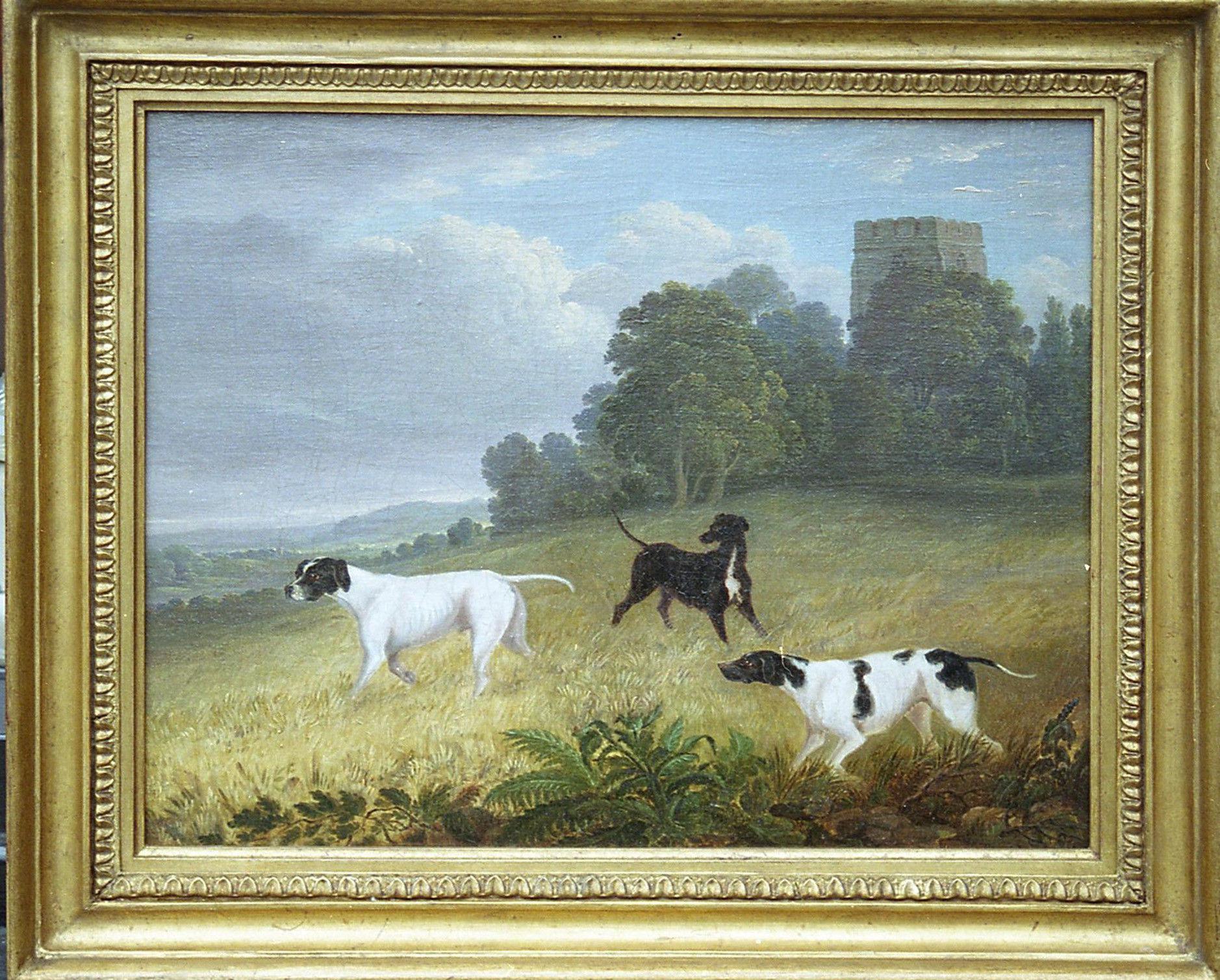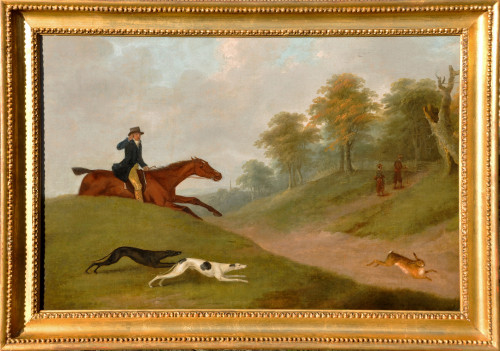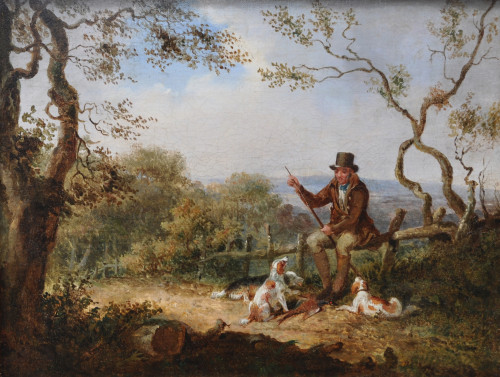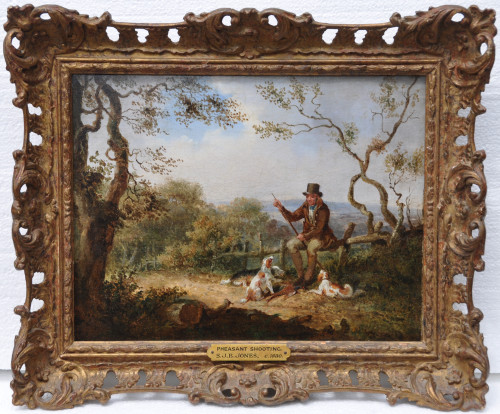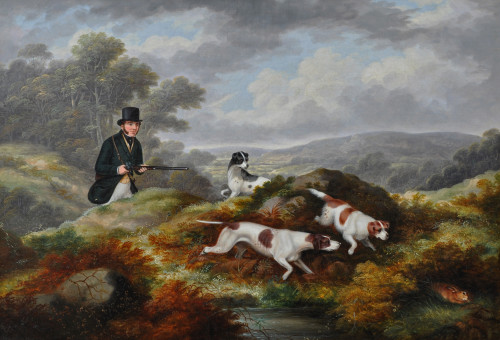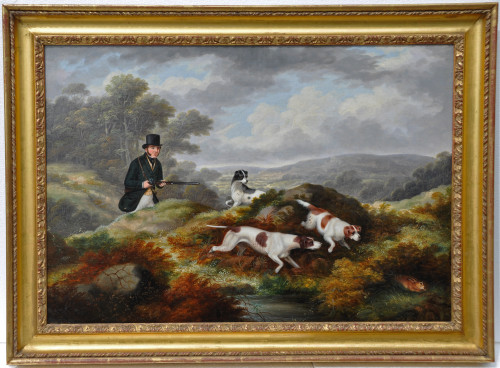Pointers in a Landscape
Pointers in a Landscape
Attributed to EDWIN COOPER
1785-1833, English School
Pointers in a Landscape
Oil on canvas
34.3 x 43.5 cms
13 1/2 x 17 1/8 inches
The eighth of ten children, Edwin Cooper was born on 1st January in Bury St Edmunds. His father, Daniel, was an art master and his mother, Martha, ran a school for young ladies.
His seven elder siblings all died in infancy but his two younger sisters survived and one of them, Ann, also became an artist.
Cooper moved to Beccles in 1810 possibly prompted by the fact that one of his patrons, Sir Edmund Gooch, lived near there at Benacre. Another of his early patrons was the Duke of Grafton for whom he painted his first commission aged only 17. Cooper had his first Royal Academy exhibit in 1803 with a painting done for the Duke of York. He seems to have been in constant employment and his commissions became larger and more adventurous as his career developed. Indeed, he had so much work that at one time he kept a studio employing assistants and 'face painters'. His standard charge was about 15 guineas but this increased for larger and more important works.
Cooper painted in both oils and watercolours but he did make some unsuccessful attempts at etching on copper. A series of paintings, The Life of a Racehorse, was published in a series of engravings by Muskett of Norwich and R Ackermann of London. He borrowed this idea from the renowned horse painter, Thomas Gooch and they originally sold for £2 on India paper and £1 10 shillings on other paper.
He cannot be said to have had a truly independent style reflecting more the style of the time and influences such as Sawrey Gilpin, Francis Sartorius and Ben Marshall can often be detected in his work. The Royal Academy even refused one of his paintings on the grounds that it was a copy after Stubbs and this so incensed Cooper that he did not exhibit there again for 28 years.
Cooper and his sister exhibited over 100 paintings at the Norwich Society between 1806 and 1832 and he was elected an honourary life member in 1817. It was said that he could never start a painting without first consuming a bottle of port but whether this was contributory to his early death from bronchitic trouble is not known. For a painter who had almost constant employment, he died in very depressed circumstances as he had been forced to move to a small house from his rather grand residence at Puddingmore. His rates and debts were paid after his death from funds raised by a memorial exhibition held by the Norwich Society of Artists in 1833.
Bibliography:
Dictionary of British Equestrian Artists - Sally Mitchell
British Landscape Painters - M H Grant
1785 - 1833
Oil on canvas
England
RELATED ITEMS

